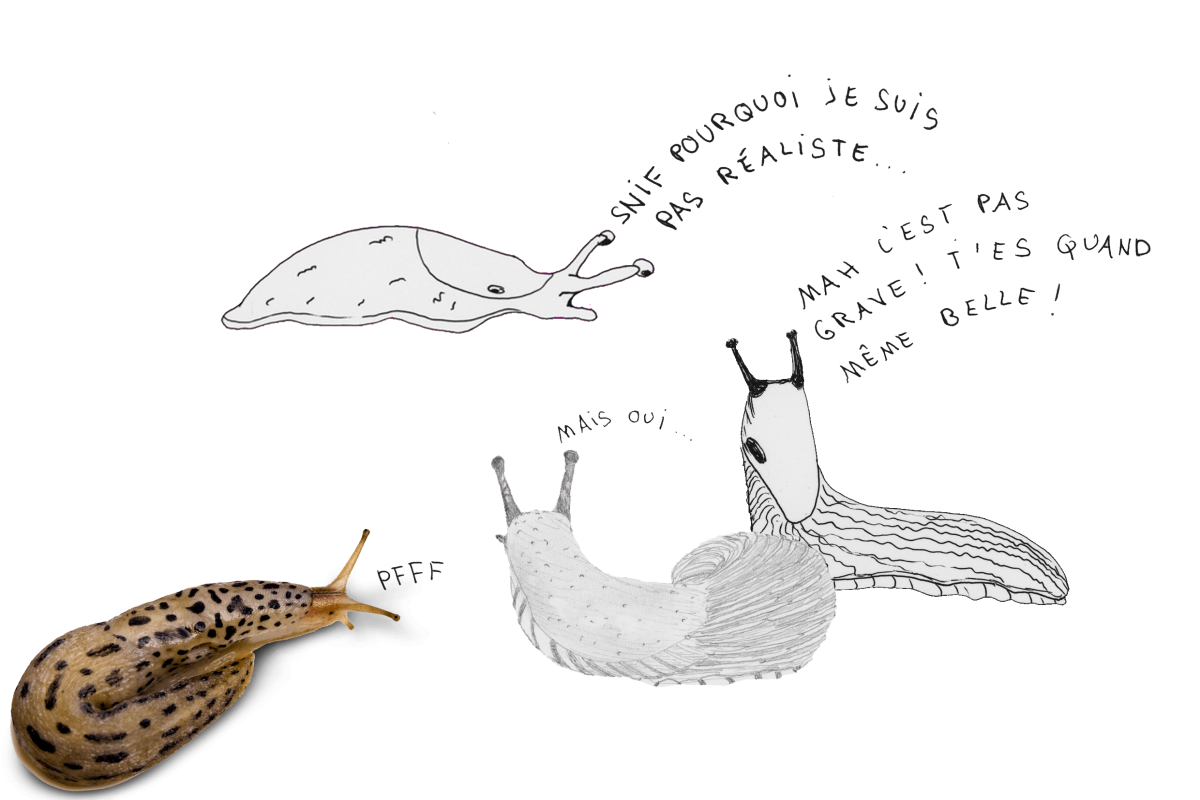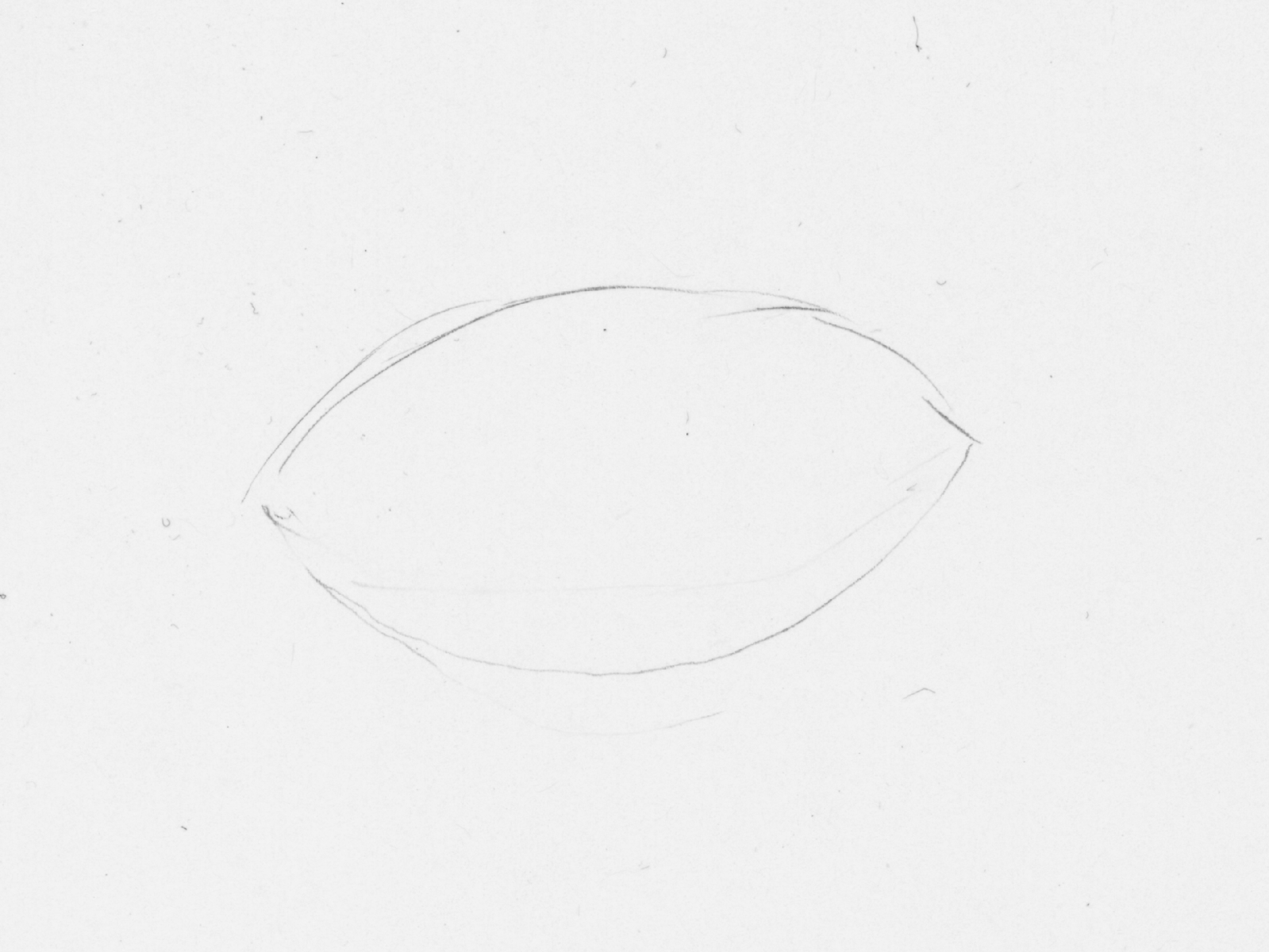
But it looks like nothing!
When you think about making visual art, you can do all sorts of things nowadays, like making video games, performing with birds, painting murals with sprays or making concrete sculptures, but no one has ever resisted the urge to finally draw a person's face or the house across the street, and REALISTIC, please!
But what exactly is "realistic"?
It would be to draw a face, a house, an object, as they really are, as if we were taking a photograph. In fact, before photography existed and became widespread, around 1840, painters and draftsmen often had the task of representing reality as accurately as possible. This was so that everyone could have a memory, a trace of their loved ones, as we have photographs of our loved ones today, but also to prove their virtuosity, because to tell the truth, it is not so easy to draw realistically. After the advent of photography, many of these artists disappeared to see the emergence of a greater freedom in representation.
And yes! When there is a machine that does something, we are a little freer and rare are those who continue against all odds, to do this thing. For example, few people continue to write by hand and not by computer, few people continue to walk everywhere without using those magical machines that are cars or bicycles, and few people still draw by hand and not with a graphic tablet in a professional setting. And yet, writing by hand, walking and drawing with a pencil, it feels good and there are many who continue to make realistic drawings because it is a step and sometimes a goal in itself in the practice of drawing, because it is what your uncle and your cousin will call a "beautiful" drawing and because it is with that that you will impress them and even impress yourself!
The drawing will have to resemble as much as possible the "reality", what you see. But soon enough, we realize a small problem. We don't all see exactly the same way. And that's why in art, the person who draws, the way he sees, his interpretation, is as important as the accuracy of the lines. A very simple and not very realistic drawing can convey much more messages and emotions than a photograph, and art is not necessarily a question of realism but also a question of emotions.
We could talk about the difference between :
An "objective drawing": which resembles the object as much as possible, like architectural drawings for example
A "subjective drawing": the object seen by a person, with the style, the emotions, the particular features, specific to the person
And we quickly understand that a drawing is always a representation of an object seen by a person, and therefore a perfectly objective drawing, or totally realistic, does not exist! A drawing is always subjective and will never be reality, and neither will a photograph. The closest image to reality is the one that a person sees with his eyes and his brain, to which are added smells, sensations, framing, temperature, etc... And still it is not reality since it is specific to the eyes and the brain of each person. One could even say that reality does not exist and it is a very ideal goal to want to reach it.
What good news!
The important thing is to start and not to judge yourself, an "ugly drawing" does not exist, it is simply a drawing that does not correspond to the style you would like to see. And when you exceed these expectations, you can enjoy drawing, succeed in finding your style, your way of doing things, find a way to convey emotions or messages, express yourself or surpass yourself. You just have to find where to place yourself between realism and abstraction, technical drawing, architecture, sculpture, fashion, cartoon, comic strip, press, caricature, manga drawing, landscape drawing, pixelated drawing, naive drawing, child drawing, abstract drawing...etc
Mangakas (manga artists) draw with realistic proportions and yet it is not a realistic drawing. It is a way of drawing that plays with emotions. For example, to draw the look of a person, it will be a question of making the eyes bigger with reflections to better convey a certain emotion, or bigger muscles to better represent the strength of a character. In reality, no one has such big eyes or muscles. These drawings are not realistic and yet mangakas work with situations, settings and characters often concrete, human proportions close to reality and must have a basis in realistic drawing. Find more details on how to draw a manga drawing if you are interested in this subject. If you want to learn how to draw in this style, Apolline offers Manga drawing classes, but if you want to get even closer to the goal of realism, the school also offers academic drawing classes.
The basics
Now that you are ready and informed, here are the basic principles that will help you to make a realistic drawing.
First, take a pencil, paper and eraser and choose an object or subject that you like. It can be a cup, a plant, a lamp, a stuffed animal, a person who is willing to pose for you etc...
The golden and most important rule for this type of drawing is OBSERVATION. Start by observing the object, the contours, the shadows and the light.
Start by drawing the outline of the object very lightly. One of the basic rules of realistic drawing is to sketch without pressing the lines because they will not be in the right place at first and will have to be erased and readjusted to get the right shape. In realistic drawing the contour lines are not necessarily marked.

Never stop looking at your object and then at your drawing and vice versa. To help you, take your drawing and hold it in front of you, farther away, to get some distance and better consider it. If a line to make a curve is too curved, erase it and make it straighter. For example, if you have drawn an eye outline and it looks too round, erase the bottom line and make it straighter.
.png)
Once you have the right shape, move on to the details. For example, if you are drawing a face, never start by drawing the details of the eye, if the outline of the eye is wrongly placed on the face, you will have to erase it and therefore erase all the details for which you took a lot of time. It is therefore only at the end that you will draw the details which are the eyelid, the lashes, the iris, the pupil, the reflections and the shadow areas.
.png)
There is always a light source, otherwise you would not be able to see the object. Detect where it is and observe that the bright areas are on the same side as the light, and the dark areas are on the other side. If there is an object or volume that is blocking the light, it will also create a shadow, a darker one. You can then make the shadow areas darker by hatching them and running your finger over them to even them out. Once you've reached a certain level, use an architect's eraser to blur the lines and areas that are too dark. (If you want to know more about the manga version of eye drawing, don't hesitate to read the article).
.png)
If you want to give more punch to your drawing, erase the light or reflection area and go over the lines you want to highlight. This detail will make your drawing less close to reality but will paradoxically make it more emotional and therefore possibly closer to reality!
.png)
To summarize, the most important thing is observation, then training. The more you draw, the more connections will be made and perfected in your brain, in your nerves, in your arm, your hand and your fingers. When you have succeeded, you will have all the time to have fun and to choose which style of drawing you like and corresponds to you the most!
